
During World War II, the United States forcibly relocated and incarcerated about 120,000 people of Japanese descent in ten concentration camps operated by the War Relocation Authority (WRA), mostly in the western interior of the country. Approximately two-thirds of the detainees were United States citizens. These actions were initiated by Executive Order 9066, issued by President Franklin D. Roosevelt on February 19, 1942, following Imperial Japan's attack on Pearl Harbor, Guam, the Philippines, and Wake Island in December 1941. Before the war, about 127,000 Japanese Americans lived in the continental United States, of which about 112,000 lived on the West Coast. About 80,000 were Nisei and Sansei. The rest were Issei immigrants born in Japan, who were ineligible for citizenship. In Hawaii, where more than 150,000 Japanese Americans comprised more than one-third of the territory's population, only 1,200 to 1,800 were incarcerated.

Desha County is a county located in the southeast part of the U.S. state of Arkansas, with its eastern border the Mississippi River. At the 2020 census, the population was 11,395. The county seat is Arkansas City.
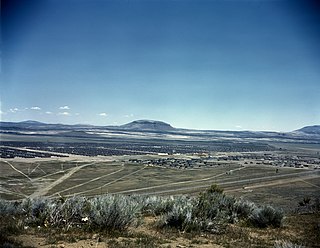
The Tule Lake National Monument in Modoc and Siskiyou counties in California, consists primarily of the site of the Tule Lake War Relocation Center, one of ten concentration camps constructed in 1942 by the United States government to incarcerate Japanese Americans forcibly removed from their homes on the West Coast. They totaled nearly 120,000 people, more than two-thirds of whom were United States citizens. Among the inmates, the notation "鶴嶺湖" was sometimes applied.

Minidoka National Historic Site is a National Historic Site in the western United States. It commemorates the more than 13,000 Japanese Americans who were imprisoned at the Minidoka War Relocation Center during the Second World War. Among the inmates, the notation 峰土香 or 峯土香 was sometimes applied.

The Amache National Historic Site, formally the Granada War Relocation Center but known to the internees as Camp Amache, was a concentration camp for Japanese Americans in Prowers County, Colorado. Following the Japanese attack on Pearl Harbor on December 7, 1941, Japanese Americans on the West Coast were rounded up and sent to remote camps. Among the inmates, the notation "亜町" was sometimes applied.

The Japanese American National Museum is located in Los Angeles, California, and dedicated to preserving the history and culture of Japanese Americans. Founded in 1992, it is located in the Little Tokyo area near downtown. The museum is an affiliate within the Smithsonian Affiliations program.

The Topaz War Relocation Center, also known as the Central Utah Relocation Center (Topaz) and briefly as the Abraham Relocation Center, was an American concentration camp in which Americans of Japanese descent and immigrants who had come to the United States from Japan, called Nikkei were incarcerated. President Franklin Roosevelt signed Executive Order 9066 in February 1942, ordering people of Japanese ancestry to be incarcerated in what were euphemistically called "relocation centers" like Topaz during World War II. Most of the people incarcerated at Topaz came from the Tanforan Assembly Center and previously lived in the San Francisco Bay Area. The camp was opened in September 1942 and closed in October 1945.

The Poston Internment Camp, located in Yuma County in southwestern Arizona, was the largest of the 10 American concentration camps operated by the War Relocation Authority during World War II.

The Jerome War Relocation Center was a Japanese American internment camp located in southeastern Arkansas, near the town of Jerome in the Arkansas Delta. Open from October 6, 1942, until June 30, 1944, it was the last American concentration camp to open and the first to close. At one point it held as many as 8,497 detainees. After closing, it was converted into a holding camp for German prisoners of war. Today, few remains of the camp are visible, as the wooden buildings were taken down. The smokestack from the hospital incinerator still stands.

The Rohwer War Relocation Center was a World War II Japanese American concentration camp located in rural southeastern Arkansas, in Desha County. It was in operation from September 18, 1942, until November 30, 1945, and held as many as 8,475 Japanese Americans forcibly evacuated from California. Among the inmates, the notation "朗和" was sometimes applied. The Rohwer War Relocation Center Cemetery is located here, and was declared a National Historic Landmark in 1992.
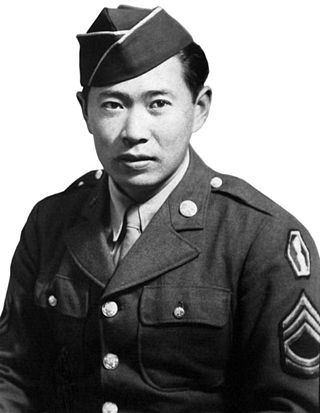
Ted Takayuki Tanouye was a Japanese American soldier in the United States Army who posthumously received the United States military's highest decoration for bravery—the Medal of Honor—for his actions in World War II.
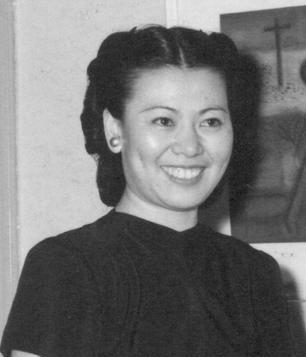
Miné Okubo was an American artist and writer. She is best known for her book Citizen 13660, a collection of 198 drawings and accompanying text chronicling her experiences in Japanese American internment camps during World War II.
Honouliuli National Historic Site is near Waipahu on the island of Oahu, in the U.S. state of Hawaii. This is the site of the Honouliuli Internment Camp which was Hawaiʻi's largest and longest-operating internment camp, opened in 1943 and closed in 1946. It was designated a National monument on February 24, 2015, by President Barack Obama. The John D. Dingell, Jr. Conservation, Management, and Recreation Act, signed March 12, 2019, redesignated it as Honouliui National Historic Site. The internment camp held 320 internees and also became the largest prisoner of war camp in Hawaiʻi with nearly 4,000 individuals being held. Of the seventeen sites that were associated with the history of internment in Hawaiʻi during World War II, the camp was the only one built specifically for prolonged detention. As of 2015, the new national monument is without formal services and programs.

Rohwer, Arkansas is an unincorporated community in Desha County, Arkansas, United States. The community is located on Arkansas Highway 1.

Henry Yuzuru Sugimoto was a Japanese-American artist, art teacher and a survivor of Japanese American Internment during World War II. Sugimoto became a naturalized citizen of the United States in 1952.
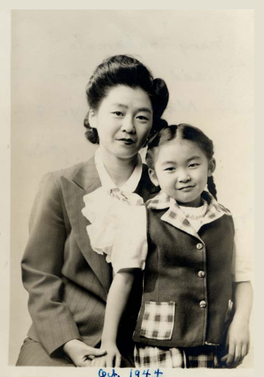
Mary Tsuruko Dakusaku Tsukamoto was a Japanese American educator, cultural historian, and civil rights activist. She had taught in the Elk Grove Unified School District in Sacramento, California, for 26 years, and was described as having a passion to teach children how to learn from experience. The daughter of Japanese parents, she was relocated to an internment camp at Jerome, Arkansas, after the United States entered World War II. She developed a program about the internment period that is part of the California state curriculum for fifth grade history and a California Museum of History tour exhibit. She worked for Japanese American civil liberties, and played a pivotal role in the grassroots effort that led to the Civil Liberties Act of 1988. She also worked with the Smithsonian Institution in Washington DC, where she developed an exhibit on internment for the Constitution's bicentennial. In March 2006, she was posthumously recognized as a National Women's History Month honoree.
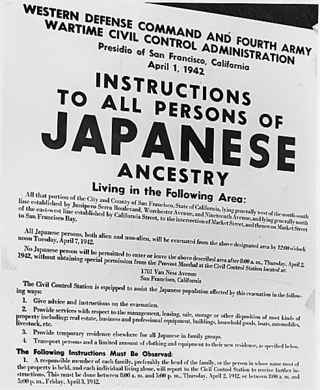
The Day of Remembrance is a day of commemoration for the incarceration of Japanese Americans during World War II. It is a day for people of Japanese descent in the U.S. to reflect upon the consequences of Executive Order 9066. The Day of Remembrance also creates a space for the facilitation of dialogue and informing the public about the repercussions of such government action. Events in numerous U.S. states, especially in the West Coast, are held on or near February 19, the day in 1942 that Executive Order 9066 was signed by President Franklin D. Roosevelt, requiring internment of all Americans of Japanese ancestry. Areas where people of Japanese descent in the U.S. were forced to relocate included Arizona, Colorado, Wyoming, Utah, Arkansas, and Idaho. There are events held in each of these states as well. Events are not only relegated to the West Coast and it is widely observed in areas such as New England, Chicago, Alaska, Philadelphia, and New York.
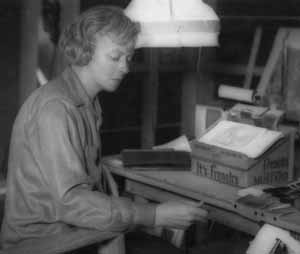
Estelle Ishigo, née Peck, was an American artist known for her watercolors, pencil and charcoal drawings, and sketches. During World War II she and her husband were incarcerated at the Heart Mountain Relocation Center in Wyoming. She subsequently wrote about her experiences in Lone Heart Mountain and was the subject of the Oscar winning documentary Days of Waiting: The Life & Art of Estelle Ishigo.
George Hoshida was a Japanese American artist known for his drawings made during World War II, when he was incarcerated in three US internment camps and two Justice Department camps between 1942 and 1945. Nearly 300 of his works form the George Hoshida Collection, held and displayed by the Japanese American National Museum, founded in 1992 in Los Angeles, California.
Wendy Maruyama is an American visual artist, furniture maker, and educator from California. She was born in La Junta, Colorado.

















